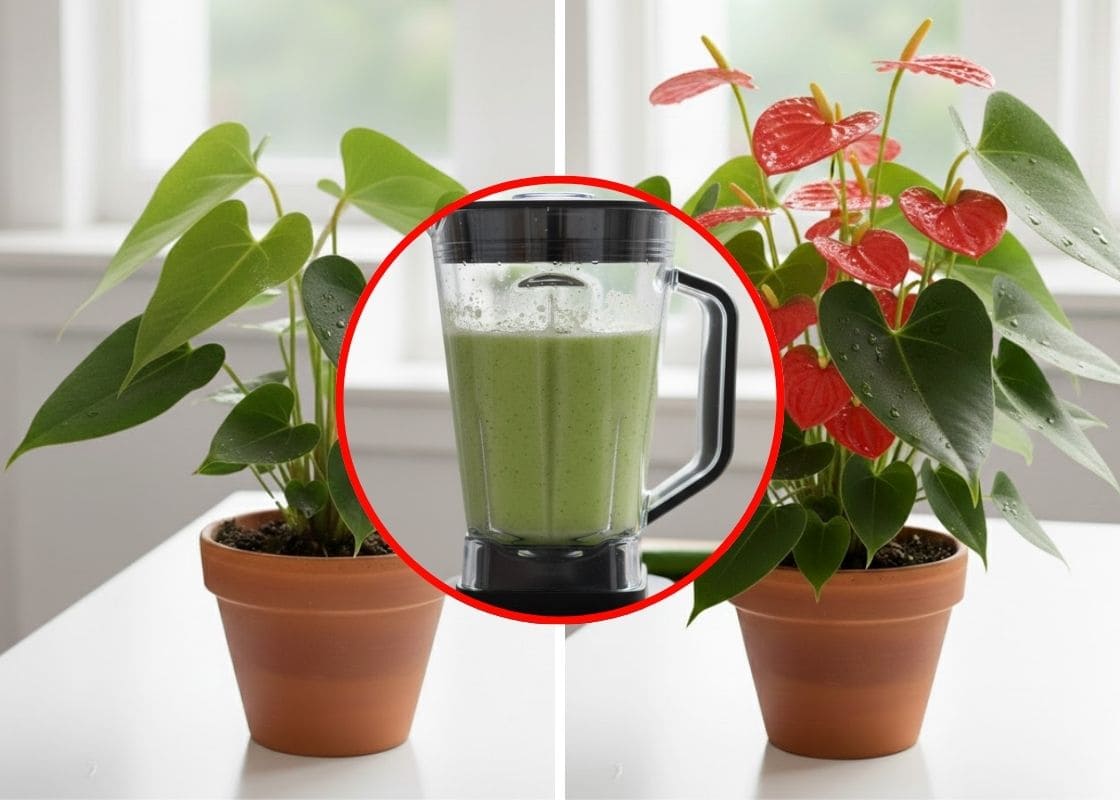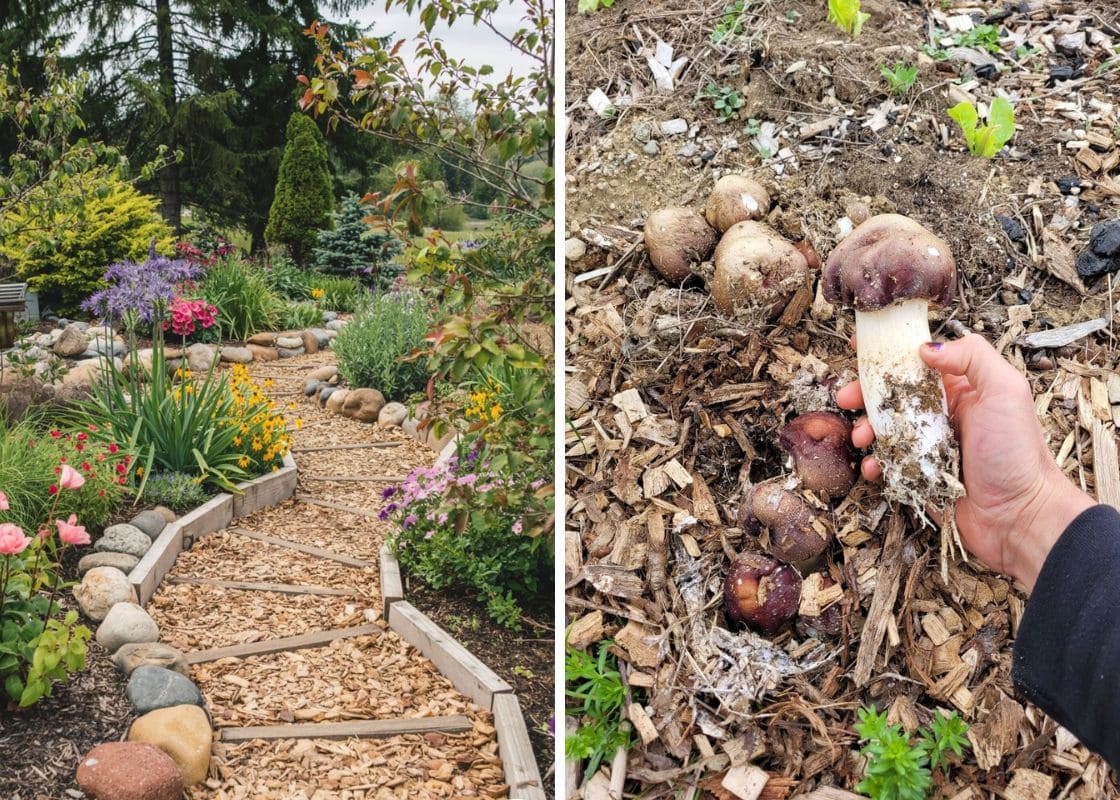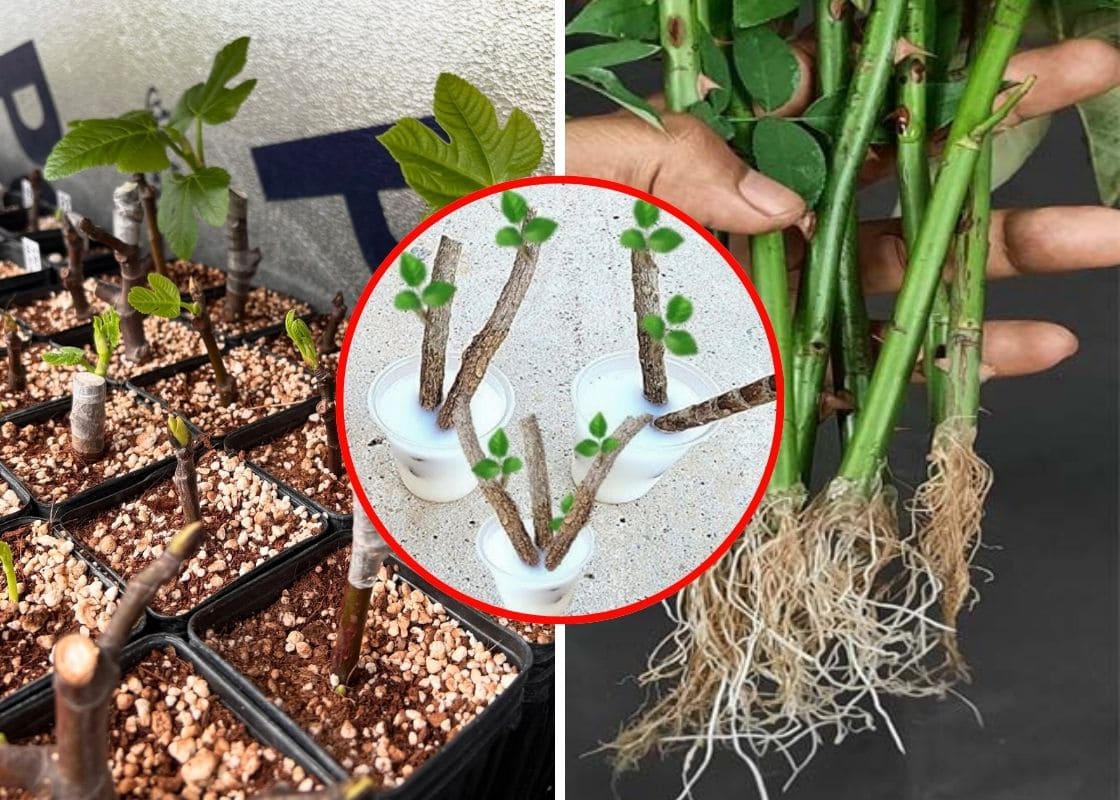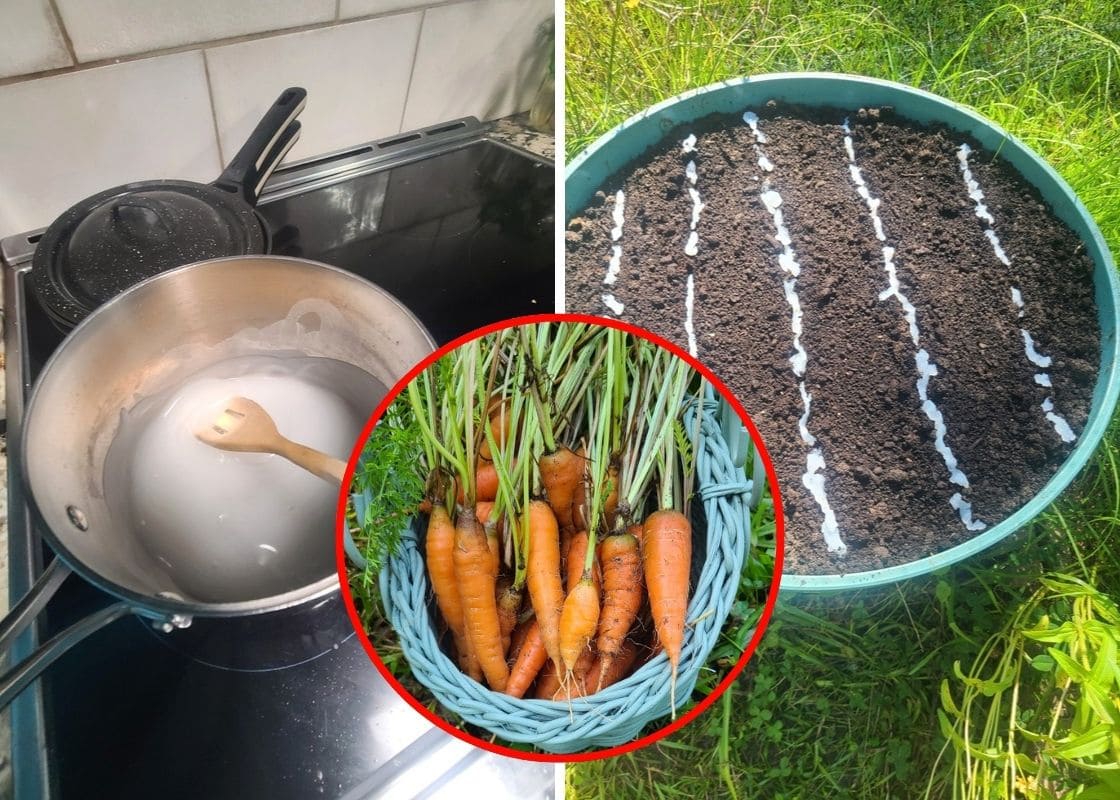Our natural world is a tapestry of diverse plant life, each species playing a unique role in its ecosystem.
However, as we venture into parks, forests, and even our own backyards, we may unknowingly encounter plants that can cause severe harm if touched or ingested.
The evolution of these toxic defenses in plants is a fascinating aspect of nature’s complexity, serving as protection against herbivores and other threats.
Let’s begin our journey through the world of these deceptively dangerous plants, arming ourselves with the knowledge to safely appreciate the beauty and diversity of our natural world.
Water Hemlock (Cicuta maculata)
Water hemlock, often referred to as the “most violently toxic plant in North America,” is a member of the Apiaceae family, which includes carrots and parsley.
This similarity in appearance to edible plants makes it particularly dangerous, as it can be easily mistaken for harmless wild vegetables.
Identifying Features of Water Hemlock
Water hemlock can appear harmless, making it quite dangerous. It thrives in wet areas like marshes and stream banks across North America, posing a risk to hikers, foragers, and children near water.
Its most notable feature is the small white flowers grouped in umbrella-like clusters called umbels, ranging from 2 to 6 inches wide. The plant often grows tall, reaching 3 to 6 feet.
The stem is hollow with distinct purple spots or streaks, which can be confused with the less toxic poison hemlock’s mottled stem. It’s jointed with branches at these joints.
Water hemlock leaves are compound, consisting of multiple, serrated lance-shaped leaflets arranged alternately on the stem.
The roots are particularly hazardous, being thick and tuberous with hollow chambers containing a yellowish, oily fluid that’s highly toxic.
They can resemble edible plants like wild parsnips or carrots, leading to dangerous misidentifications.
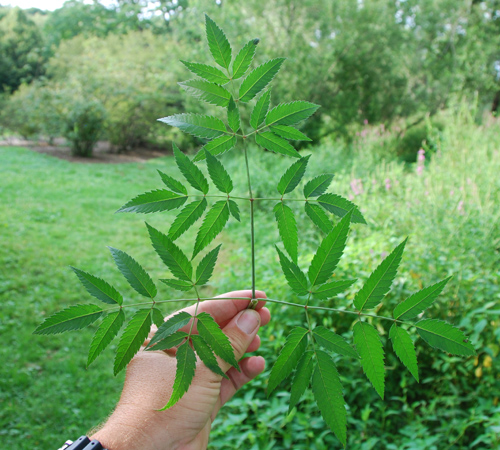
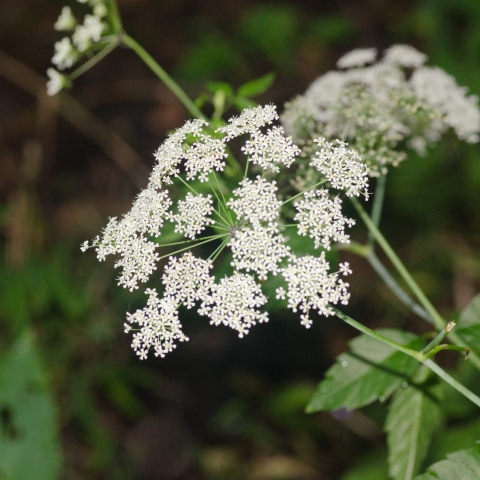
Severity of Poisoning and Symptoms
Water hemlock toxicity is critical due to its cicutoxin content, a highly potent neurotoxin. Symptoms can surface within 15 minutes of ingestion, with potential fatalities occurring in hours.
Cicutoxin disrupts the central nervous system by blocking GABA neurotransmitters, leading to severe neurological effects.
Initial symptoms include nausea, vomiting, and abdominal pain, often accompanied by excessive salivation and frothing at the mouth.
As poisoning advances, serious neurological signs emerge.
Severe seizures are a hallmark of water hemlock poisoning, characterized by their violence and rapid occurrence, potentially causing jaw clenching that chips teeth.
Progression may lead to respiratory paralysis and death if untreated. Other alarming symptoms include dilated pupils, increased heart rate, high blood pressure, and coma.
A tiny amount of water hemlock can trigger these severe reactions, making it especially dangerous due to its resemblance to edible plants.
Treatment is supportive since there is no antidote for cicutoxin. Care focuses on seizure management, respiratory support, and addressing symptoms, with intubation possible in critical cases.
Survivors may face lasting effects like memory issues, speech difficulties, or permanent seizure disorders.
Poison Ivy (Toxicodendron radicans)
Poison ivy is perhaps one of the most infamous plants in North America, known for its ability to cause an itchy, blistering rash upon contact.
Despite its notoriety, many people still fall victim to its irritating effects each year, often due to misidentification or accidental contact.
Recognizing Poison Ivy’s Distinctive Leaflets
Poison ivy’s look can be misleading, changing with its environment and growth stage. This adaptability makes it hard to avoid, but certain traits aid in identification.
Its most recognizable feature is the leaves, always in groups of three – hence the saying, “Leaves of three, let it be.” Each leaflet is usually 2 to 4 inches long with smooth or slightly toothed edges; the middle one often has a longer stem.
Leaf shapes and textures differ; they may be shiny or dull, smooth or lobed, with young leaves showing a reddish hue and mature ones dark green. In autumn, they can turn bright red, orange, or yellow.
Poison ivy can grow as a vine or shrub. As a vine, it climbs using aerial rootlets, giving it a fuzzy appearance. As a shrub, it can reach up to 4 feet tall.
Its look changes with the seasons: reddish in spring, larger and greener by summer, vibrant in fall, and leafless in winter, while the vines and berries stay visible.
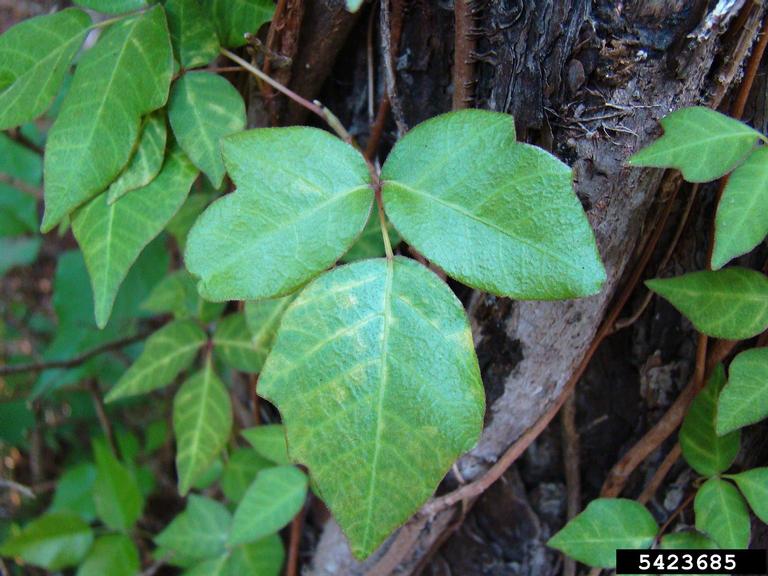
Understanding the Urushiol Reaction
Poison ivy’s rash is caused by urushiol, a clear, odorless oil found in all parts of the plant: leaves, stems, roots, and berries. This oil is highly potent and can stay active on surfaces for years.
When urushiol touches skin, it quickly penetrates the outer layers. About 85% of people are sensitive to it, triggering an allergic reaction that isn’t immediate; the immune system takes time to recognize altered proteins from the oil.
This reaction is a type of contact dermatitis where the immune system attacks the modified skin proteins, leading to a rash that appears 12 to 72 hours post-exposure.
Symptoms vary based on sensitivity and exposure level, including:
- Redness and swelling: Inflammation results from the immune response.
- Intense itching: Often the most bothersome symptom.
- Blistering: Fluid-filled blisters may develop.
- Streaky or patchy rash: Commonly appears where the plant touched the skin.
Poison Oak (Toxicodendron diversilobum)
Poison oak, a close relative of poison ivy, is another plant notorious for causing itchy, blistering rashes.
Comparing Poison Oak and Ivy
Poison oak and poison ivy are both from the Toxicodendron genus and contain urushiol oil, causing similar allergic reactions upon contact. However, they differ in appearance and growth.
Both plants have leaves in groups of three, but poison oak’s lobed or scalloped leaves resemble oak leaves, while poison ivy’s leaves do not. The shape can vary on the same poison oak plant.
Texture also varies; poison ivy leaves are glossy, whereas poison oak leaves are dull and velvety. They start bright green in spring and summer, turning red, orange, or brown in fall.
Unlike poison ivy, which often grows as a vine, poison oak is commonly a shrub that can reach over 6 feet tall. Its stems are usually woody and may appear reddish.
The berries also differ: poison ivy produces grayish-white berries, while poison oak has pale green or white berries, sometimes beige, both waxy and clustered.

Geographical Distribution and Prevalence
Poison oak’s range is notably different from poison ivy, mainly being a western plant with two key species:
- Western Poison Oak (Toxicodendron diversilobum): Found along the Pacific coast, from British Columbia to Baja California, especially in California, Oregon, and Washington.
- Atlantic Poison Oak (Toxicodendron pubescens): This less prevalent species exists in the southeastern U.S., from New Jersey to Florida and west to Texas.
Western poison oak grows in various habitats, including coastal regions, mountains, and grasslands. It adapts as ground cover in sunny spots or as a climbing vine in shaded areas.
In California alone, it’s estimated to cover over 1.8 million acres, posing a risk for outdoor enthusiasts.
This plant thrives in local ecosystems, as many animals consume its berries and leaves without harm, aiding its spread and helping prevent soil erosion.
Poison Sumac (Toxicodendron vernix)
Poison sumac, less known than poison ivy and poison oak, is arguably the most toxic in the Toxicodendron genus. Its rarity doesn’t diminish its potency and serious reactions, warranting careful attention.
Recognizing Poison Sumac Characteristics
Poison sumac has unique traits that distinguish it from other plants and safe sumac varieties. Recognizing these features is essential for identification and prevention.
Unlike poison ivy and oak, which have three-leaf clusters, poison sumac consists of 7 to 13 leaflets paired on a central stem, ending with a single leaflet.
The elongated, oval leaflets measure 2 to 4 inches, are smooth-edged, glossy green in summer, and shift to bright yellow, orange, or red in autumn.
This plant typically grows as a tall shrub or small tree, reaching up to 20 feet, often found in wetlands like swamps and slow-moving streams.
It thrives in wet soils, unlike poison ivy and oak, which prefer drier areas.
Poison sumac also produces small, white to cream berries that hang from leaf axils. These waxy berries are toxic due to urushiol, like poison ivy and oak, but they can be eaten by birds, aiding in seed dispersal without harm.
Recognizing these features is crucial for anyone in regions where poison sumac grows. Its distinct traits help individuals avoid this hazardous plant effectively.
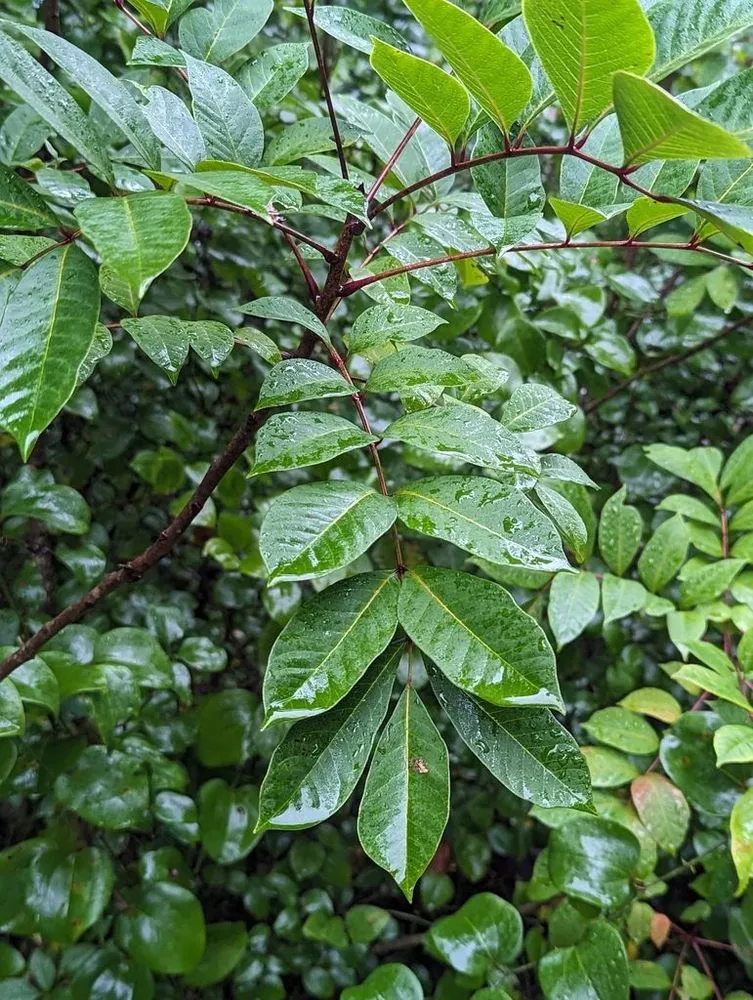
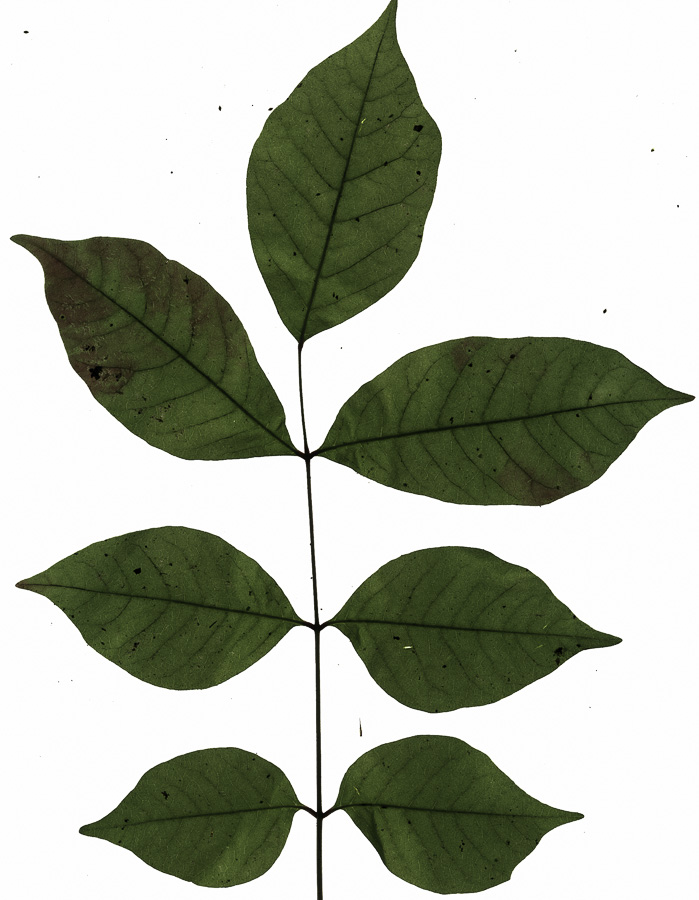
Less Common but Serious Reactions
While poison sumac encounters are rarer than those with poison ivy and oak, the reactions can be more severe.
Many individuals don’t realize they are allergic to urushiol until after exposure, resulting in significant discomfort.
The typical response to poison sumac starts with itching and redness within 24 to 48 hours, potentially escalating into painful blisters that ooze and crust.
Severity varies by individual, with some experiencing widespread dermatitis from even slight contact, necessitating medical help.
Exposure often occurs unintentionally, especially among outdoor enthusiasts near water. Accidental contact with leaves or contaminated gear can provoke serious allergies. Additionally, inhaling smoke from burning poison sumac can lead to further risks.
Affected individuals may experience physical pain and emotional distress due to visible rashes. Severe cases, particularly in those with weakened immune systems, can be life-threatening.
To mitigate risks in areas where poison sumac is present, it’s crucial to wear protective clothing, be aware of surroundings, and learn to identify this hazardous plant.
Castor Bean (Ricinus communis)
Often admired for its striking foliage and ornamental beauty, the castor bean plant harbors a dark secret: it is one of the most poisonous plants in the world. Despite its aesthetic appeal, this plant poses significant health risks if ingested or improperly handled.
Attractive Yet Hazardous
Castor bean plants are popular for their large, striking leaves and distinctive seed pods, often featured in gardens.
They can grow up to 10 feet tall, adding a tropical vibe. However, their beauty hides significant risks.
Traditionally, castor seeds have been used in medicine, but they contain ricin, a powerful toxin that can lead to severe poisoning and even death.
The danger arises when seeds are chewed or crushed, releasing ricin into the body; just a few seeds can be lethal.
Symptoms of ricin poisoning can start within hours and may include nausea, vomiting, diarrhea, and abdominal pain. As the toxin spreads, it can cause dehydration and potentially fatal liver and kidney failure.
While castor beans might seem beneficial in herbal remedies, it’s crucial to understand the associated risks. Caution is essential, and consulting knowledgeable sources is advised before considering any medicinal use of this toxic plant.
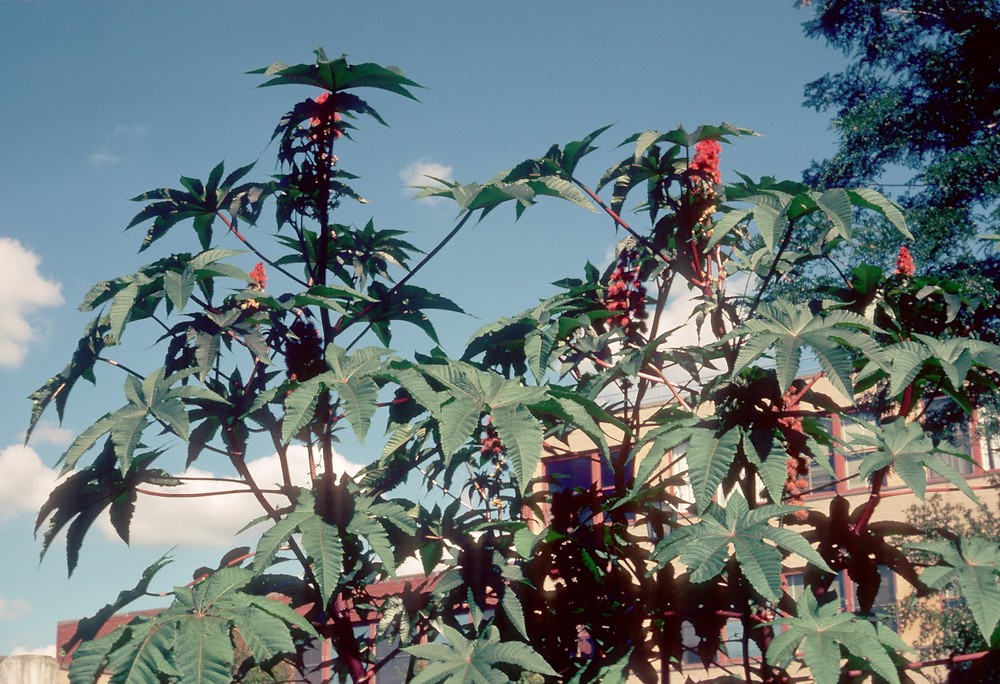
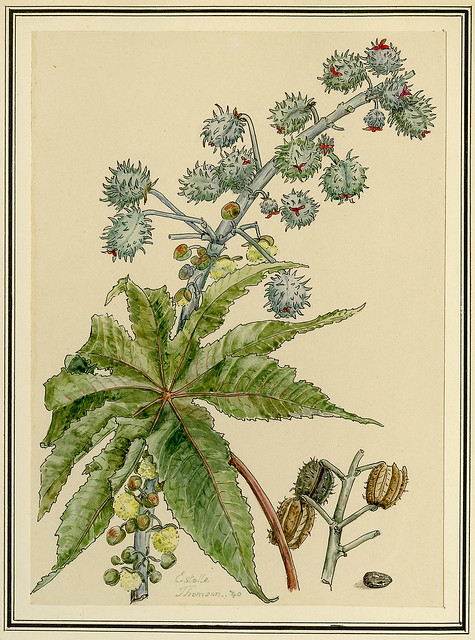
The Dangerous Toxin Ricin
Ricin is a lectin derived from processed castor bean waste. It inhibits protein synthesis in cells, causing cell death with even tiny amounts proving lethal.
Alarming is the fact that ricin retains its toxicity even through cooking or processing, making any preparation of castor beans risky for consumption.
Moreover, ricin has potential uses in targeted drug delivery for cancer treatment, as it can selectively kill cancer cells. However, ethical and safety concerns must be considered due to the associated risks.
Education about castor bean plants is crucial. Their beauty may attract attention, but understanding their toxicity helps individuals remain informed about potential dangers.
Oleander (Nerium oleander)
Known for its beautiful blooms and evergreen foliage, oleander is another plant that deceptively hides its toxic nature beneath a stunning exterior.
Found in many gardens and landscapes across the world, oleander holds the title of one of the most poisonous plants, with all parts of the plant containing toxic compounds.
Beautiful Yet Highly Toxic Plant
Oleander’s vibrant flowers, ranging from white to pink and red, draw gardeners and onlookers. However, this beauty conceals a serious threat.
Every part of the oleander plant—leaves, stems, and flowers—contains cardiac glycosides, harmful toxins that impact the heart and circulatory system.
Ingestion can cause symptoms like nausea, vomiting, abdominal pain, and potentially fatal arrhythmias.
Reactions vary based on the amount consumed and individual health, with even small quantities posing risks, especially to children and pets.
Given its toxicity, it’s crucial for those growing or enjoying oleander to understand the dangers. Accidental ingestion can happen due to curiosity, particularly among kids and pets drawn to its colorful blooms. Educating others about oleander’s risks is vital in preventing poisoning incidents.
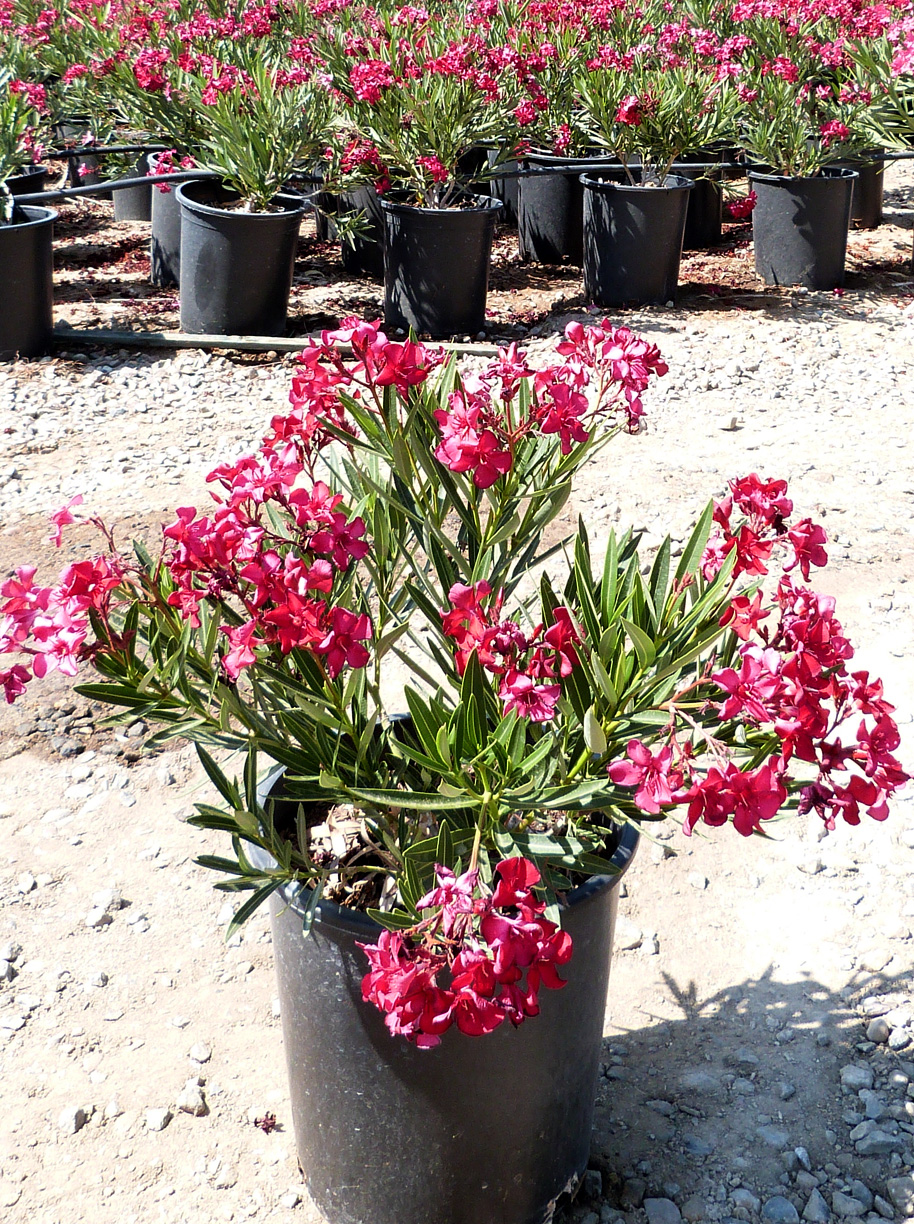
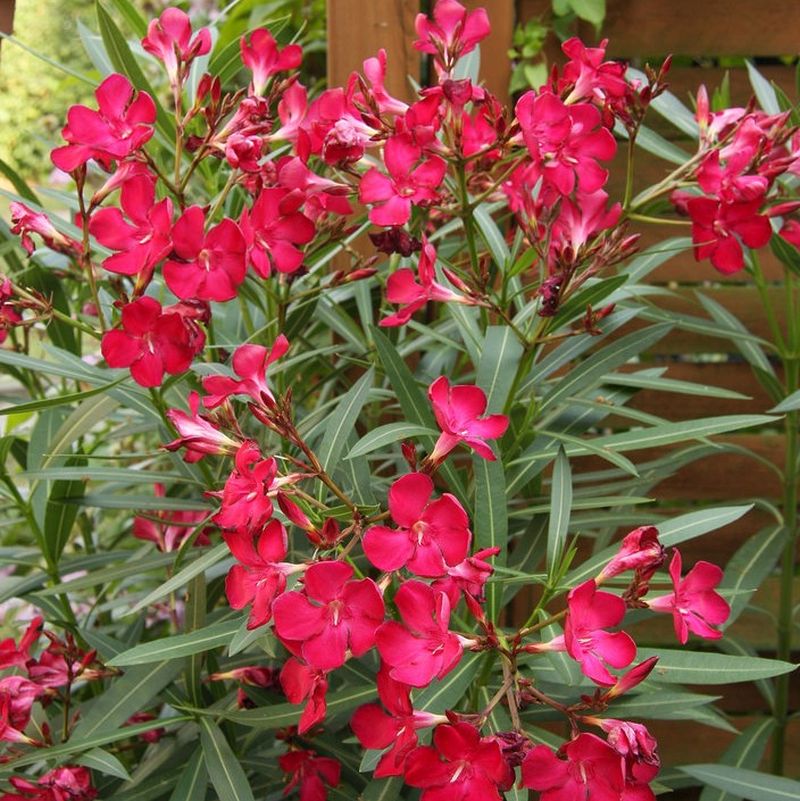
Every Part of Oleander is Toxic
Oleander’s toxicity means all its parts are hazardous to handle or ingest. Even touching the leaves can cause skin irritation in some people, emphasizing caution while gardening.
It’s essential to wear gloves when handling oleander and maintain hygiene afterward to reduce allergic reactions or exposure to toxins. Additionally, dispose of clippings carefully to avoid accidental ingestion by animals.
The risks posed by oleander reflect a broader concern with ornamental plants that have hidden dangers. While they enhance our gardens, their toxicity reminds us that beauty can be risky. Awareness and responsible gardening can significantly lower these risks, ensuring safety for everyone.
Foxglove (Digitalis purpurea)
Foxglove is another well-known plant that straddles the line between beauty and danger. Its striking flower spikes, adorned with bell-shaped blossoms, grace gardens and wild landscapes alike. However, beneath this enchanting facade lies a potent source of toxicity that warrants respect.
Medicinal Uses of Cardiac Glycosides
Foxglove has historically been significant in traditional medicine for its cardiac glycosides, especially digoxin. These compounds aid in treating heart ailments, showcasing nature’s value alongside its risks.
While regulated doses of digoxin benefit heart patients, the margin between therapeutic and toxic levels is very narrow.
Overconsumption can cause severe side effects like nausea, dizziness, confusion, or fatal arrhythmias. This highlights the need for professional guidance in using natural remedies.
Nonetheless, the dangers of foxglove are considerable. All plant parts, including leaves, flowers, and seeds, contain high toxic concentrations. Incorrect dosing or usage can lead to serious repercussions, necessitating extreme caution with this plant.

Risk of Severe Toxicity
The risk of severe toxicity from foxglove isn’t limited to humans; livestock grazing in its vicinity can also suffer serious health issues. Poisoning symptoms in animals can parallel those seen in humans, potentially leading to acute illness or death if not addressed.
It’s crucial for gardeners and nature enthusiasts to understand foxglove’s toxicity. Enjoying its beauty from afar helps avoid accidental exposure. For those growing foxglove, marking its location and informing visitors of the dangers is vital.
This intriguing yet dangerous plant prompts us to reflect on our connection with nature. While it’s easy to admire certain plants, acknowledging their risks fosters a more mindful and respectful approach to the natural world.
Jimsonweed (Datura stramonium)
Jimsonweed is perhaps one of the most notorious plants on this list due to its hallucinogenic properties and associated dangers. Its large, spiky seed pods and trumpet-shaped flowers give it an exotic appearance, but its reputation as a dangerous plant precedes it.
Hallucinogenic Risks and Effects
All parts of jimsonweed contain tropane alkaloids, like atropine and scopolamine, which cause intense hallucinations and altered consciousness. Indigenous cultures historically used the plant in shamanistic rituals and for medicine.
However, modern use often leads to dangerous experimentation and tragic outcomes.
People seeking a euphoric high from jimsonweed may misjudge its potency. Overdoses can lead to severe anticholinergic poisoning, with symptoms like dilated pupils, fast heart rate, confusion, and agitation. Fatalities are possible, especially if mixed with other substances or health issues.
The easy access to plants like jimsonweed serves as a reminder of potential dangers. It’s crucial to make informed choices regarding psychoactive plants to ensure safety and awareness in all contexts.

Accidental Ingestion Risks
Jimsonweed poses dangers beyond intentional use. It can be confused with benign plants, resulting in accidental poisonings, especially in children and pets.
Even small amounts can cause severe symptoms, requiring urgent medical attention.
The seeds can persist in soil for years, enabling growth in disturbed areas and gardens. Homeowners should recognize and safely remove this plant to reduce ingestion risks.
Education is crucial in addressing the hazards of jimsonweed. Knowing its classification in the Solanaceae family and its harmful compounds helps people handle it cautiously.
Encountering plants like jimsonweed reminds us that nature’s beauty can also be perilous. A mindful curiosity about our environment encourages awareness and safety while allowing us to enjoy its wonders.
Giant Hogweed (Heracleum mantegazzianum)
Giant hogweed is a plant that captures attention with its colossal stature and impressive flower clusters. However, this invasive species also poses significant health risks, particularly concerning skin contact and subsequent reactions to sunlight.
Identifying Giant Hogweed
Giant hogweed is easy to recognize, often growing over 14 feet tall. Its thick, hollow stems with purple spots create a striking look.
The plant has large, deeply lobed leaves that can exceed three feet in width, and its flower clusters are umbrella-like with numerous small white blooms.
A key identifying feature is its sap, which contains compounds that cause photosensitivity. Contact with skin followed by sunlight exposure can result in severe burns, blisters, and lasting scars.
Flowering occurs from late spring to early summer, marking its distinctive presence in invaded areas. Recognizing these traits is crucial to avoid encounters with this dangerous plant.
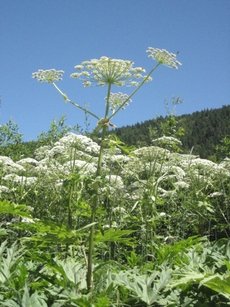
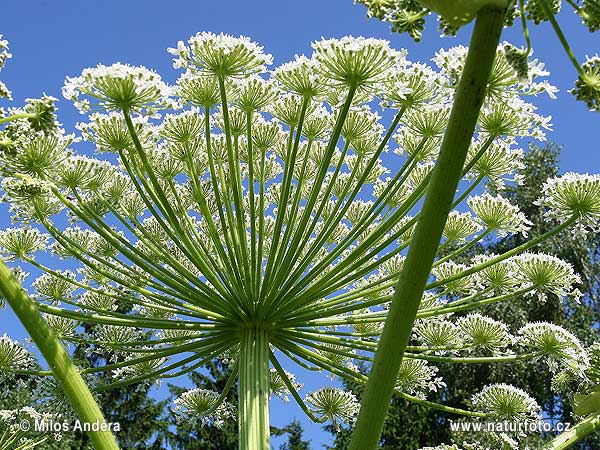
Severe Skin Reactions and Photosensitivity
Giant hogweed poses risks beyond its size. Contact with its sap can trigger reactions worsened by sun exposure, causing redness, inflammation, and painful blisters. Severe cases may affect quality of life for months.
Secondary infections are a concern as damaged skin becomes susceptible to bacteria, highlighting the importance of prompt medical care and proper wound treatment after exposure.
To minimize risk in areas with giant hogweed, individuals should wear long sleeves, pants, gloves, and sunscreen, while educating friends and family about its dangers fosters community awareness.
In case of exposure, wash the affected area with soap and water, seek medical help, and avoid sunlight. Understanding these risks can help prevent painful reactions and long-term health issues.
Chinaberry Tree (Melia azedarach)
With its beautiful, fragrant flowers and ornamental qualities, the chinaberry tree often graces parks and residential landscapes. However, beneath its attractive exterior lies a plant that poses serious risks to both humans and animals.
Chinaberry Tree Characteristics
Chinaberry trees, medium-sized and deciduous, grow 30 to 50 feet tall. Their compound leaves with numerous small leaflets form a dense canopy, offering significant shade.
The trees bear small, fragrant flowers that develop into round, yellowish fruits, which eventually turn brown. Despite their appealing look, these fruits are toxic when ingested.
Originally from Asia, chinaberry trees have spread globally, adapting well to various environments. Their robust root system enables them to thrive in different soils, making them invasive in some regions.
Identifying the unique features of chinaberry trees is essential for avoiding risks. Being aware of their growth patterns and habitats can assist in recognizing this potentially dangerous species.

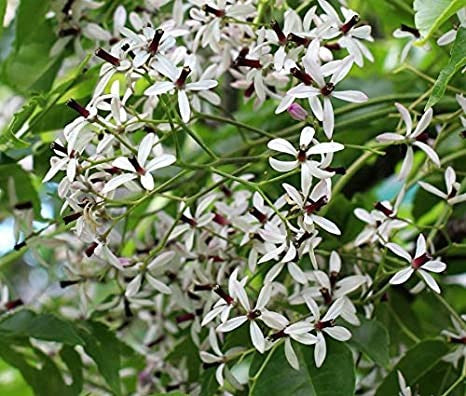
Toxicity and Health Risks
Chinaberry tree fruits, leaves, and bark contain saponins, which can be toxic. Even small amounts may cause gastrointestinal issues like nausea, vomiting, and diarrhea. Severe cases can impact the central nervous system, leading to confusion, seizures, or coma.
This toxicity poses risks, especially for children and pets who might ingest the colorful fruit or foliage. Raising awareness about local plants and educating youth on these hazards is crucial.
Additionally, the chinaberry tree’s invasive nature harms ecosystems by overshadowing native species, disrupting biodiversity, and altering habitats. Controlling its spread is vital for protecting local flora and fauna.
If you encounter chinaberry trees in your area, stay cautious. Learning about this species’ dangers fosters safer communities and promotes responsible environmental stewardship.

